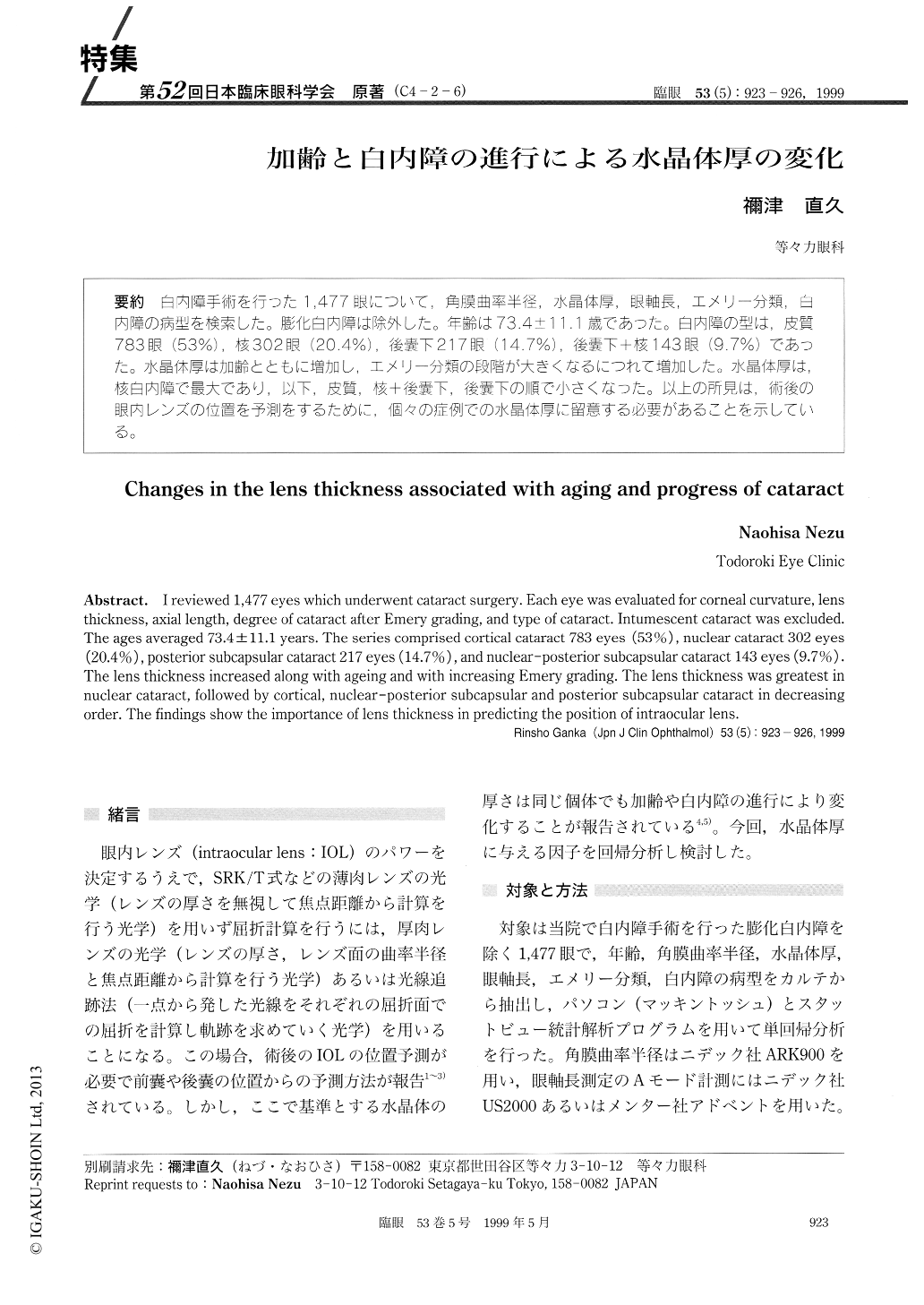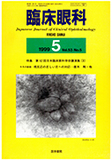Japanese
English
- 有料閲覧
- Abstract 文献概要
- 1ページ目 Look Inside
(C4-2-6) 白内障手術を行った1,477眼について,角膜曲率半径,水晶体厚,眼軸長,エメリー分類,白内障の病型を検索した。膨化白内障は除外した。年齢は73.4±11.1歳であった。白内障の型は,皮質783眼(53%),核302眼(20.4%),後嚢下217眼(14.7%),後嚢下+核143眼(9.7%)であった。水晶体厚は加齢とともに増加し,エメリー分類の段階が大きくなるにつれて増加した。水晶体厚は,核白内障で最大であり,以下,皮質,核+後嚢下,後嚢下の順で小さくなった。以上の所見は,術後の眼内レンズの位置を予測をするために,個々の症例での水晶体厚に留意する必要があることを示している。
I reviewed 1,477 eyes which underwent cataract surgery. Each eye was evaluated for corneal curvature, lens thickness, axial length, degree of cataract after Emery grading, and type of cataract. Intumescent cataract was excluded. The ages averaged 73.4 ± 11.1 years. The series comprised cortical cataract 783 eyes (53%), nuclear cataract 302 eyes (20.4%), posterior subcapsular cataract 217 eyes (14.7%), and nuclear-posterior subcapsular cataract 143 eyes (9.7%). The lens thickness increased along with ageing and with increasing Emery grading. The lens thickness was greatest in nuclear cataract, followed by cortical, nuclear-posterior subcapsular and posterior subcapsular cataract in decreasing order. The findings show the importance of lens thickness in predicting the position of intraocular lens.

Copyright © 1999, Igaku-Shoin Ltd. All rights reserved.


